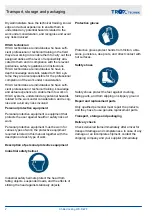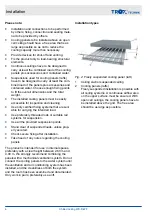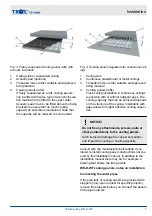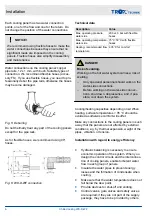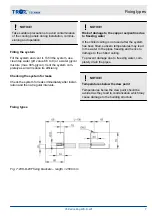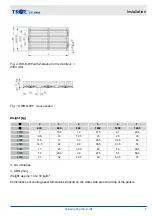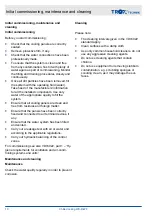
NOTICE!
Take suitable precautions to avoid contamination
of the cooling panels during installation, commis-
sioning and operation.
Filling the system
Fill the system and vent it. To fill the system, use
clean tap water (pH value 6.5 to 9) or a water glycol
mixture (max. 30% glycol). Vent the system com-
pletely as air will reduce its efficiency.
Checking the system for leaks
Check the system for leaks immediately after instal-
lation and then at regular intervals.
NOTICE!
Risk of damage to the copper serpentine due
to freezing water
If the chilled ceiling is not used after the system
has been filled, subzero temperatures may lead
to the water in the pipes freezing and hence to
damage to the chilled ceiling.
To prevent damage due to freezing water, com-
pletely drain the pipes.
NOTICE!
Temperatures below the dew point
Temperatures below the dew point should be
avoided as they lead to condensation which may
cause damage to the building structure.
Fixing types
Fig. 7: WK-D-WF fixing brackets – length < 2500 mm
Fixing types
Chilled ceiling WK-D-WF
7


